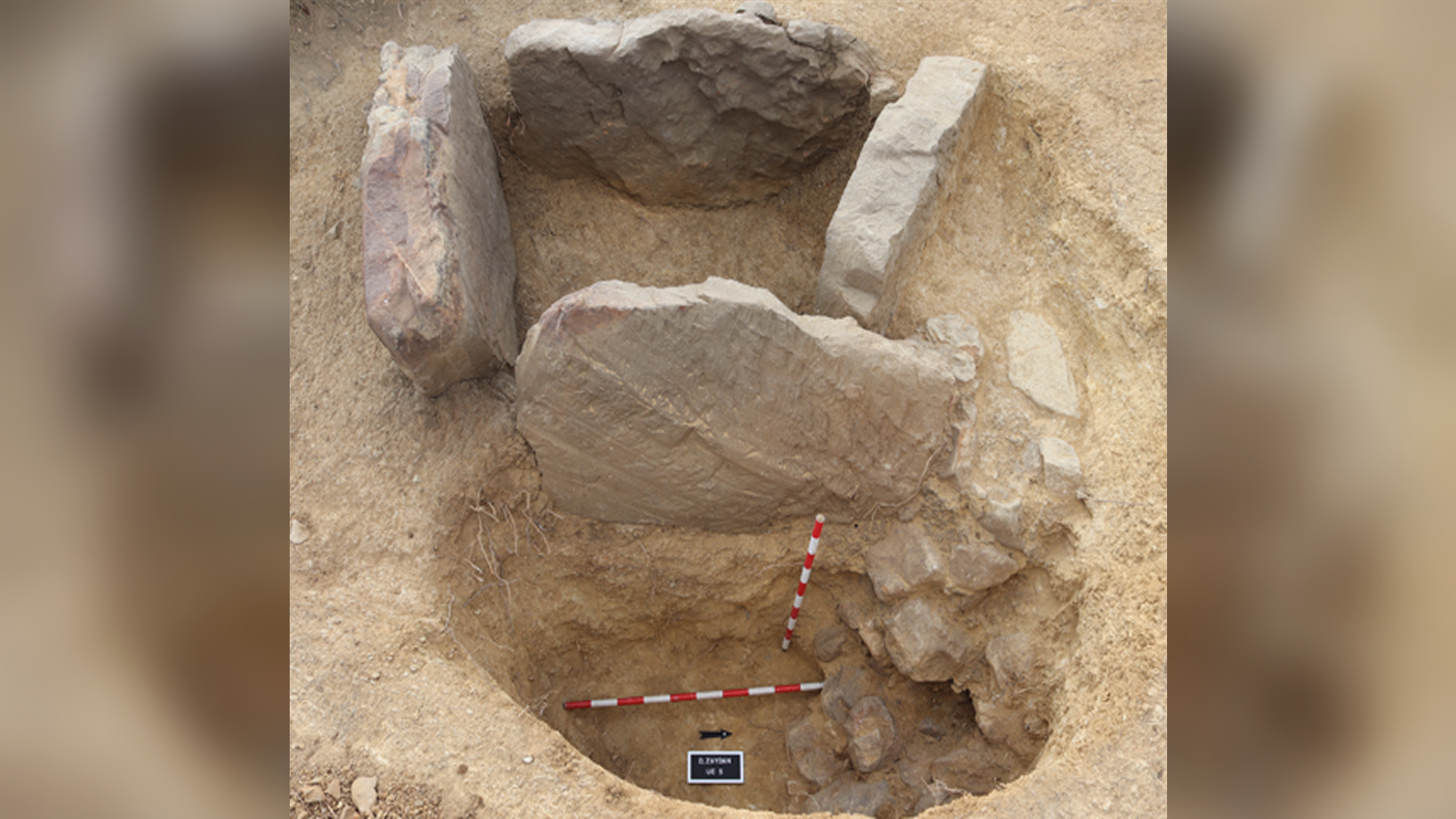Archaeologists in Tangier, just south of the Strait of Gibraltar, have discovered three ancient cemeteries, including a stone burial dating to around 4,000 years ago.
In addition, the team found a number of rock shelters painted with rock art and standing stones that may have marked territories.
The ancient cemeteries show a “rich mosaic of burial traditions,” the researchers wrote in a study published Tuesday (May 13) in the journal African Archaeological Review.
The archaeological sites are located in the Tangier Peninsula of Morocco. How long the region has been inhabited, and how the lives of people changed over time, is a source of debate among scholars. Researchers note that there has been little archaeological work examining its burial customs and ancient landscape.
“It is a sad reality that the later prehistoric funerary and ritual landscapes of North Africa west of Egypt remain, despite extensive investigation over the past 200 years, the least widely known and understood in the Mediterranean region,” the researchers wrote in the study.
During their investigation of the northwestern Tangier Peninsula, the archaeologists looked for sites dating from 3000 to 500 B.C. They found three cemeteries, some of which have “cist burials,” which consist of a hole cut into the rock, with stone slabs that were sometimes used to cover and mark it. Cutting into the rock is difficult, and “their construction likely required a significant time and effort investment,” study first author Hamza Benattia, a doctoral student in the Department of History and Archaeology at the University of Barcelona who led the archaeological team, told Live Science in an email.
The team radiocarbon dated human bones from one of the cist burials, which revealed that the tomb was constructed around 2000 B.C. This is the first time that a radiocarbon date has been obtained for a cist burial in northwest Africa, the team wrote in the paper.
Rock art
The team found about a dozen shelters with rock art on their walls. The art includes a wide variety of geometric designs that feature squares, dots and wavy lines. They also include anthropomorphic, or humanlike figures that may depict people or deities.
At some rock shelters, circular engravings that archaeologists call “cup marks” were found on the walls. These cup marks are sometimes arranged in designs, including circles and parallel lines.
A few “remarkable” drawings show “eight opposed triangles one over the other, known regionally as ‘bi-triangulars,'” the team wrote in the study. Similar drawings have been found in Iberia, and “they have often been interpreted as anthropomorphic figures, sometimes specifically as feminine representations,” Benattia said.
Another interesting form of rock art the team found depicts squares with dots and lines inside; similar rock art has been found in the Sahara Desert, the team noted in their paper.
Standing stones
At both the cemeteries and rock art sites, archaeologists found the remains of standing stones that stood pointing up toward the sky. A few sites had several standing stones clustered together in the same spot. These stones vary in size, with one of the largest standing more than 8.2 feet (2.5 meters) tall.
“Standing stones have widely been seen as territorial markers in prehistoric times” Benattia said, noting that they “may also have functioned as sites of aggregation and ritual activity.”
The findings suggest that the “ritual landscapes of the Tangier Peninsula are far more complex and widespread than previously assumed,” the team wrote in the study, “with their closest parallels in late prehistoric southern Iberia and the Sahara.”

